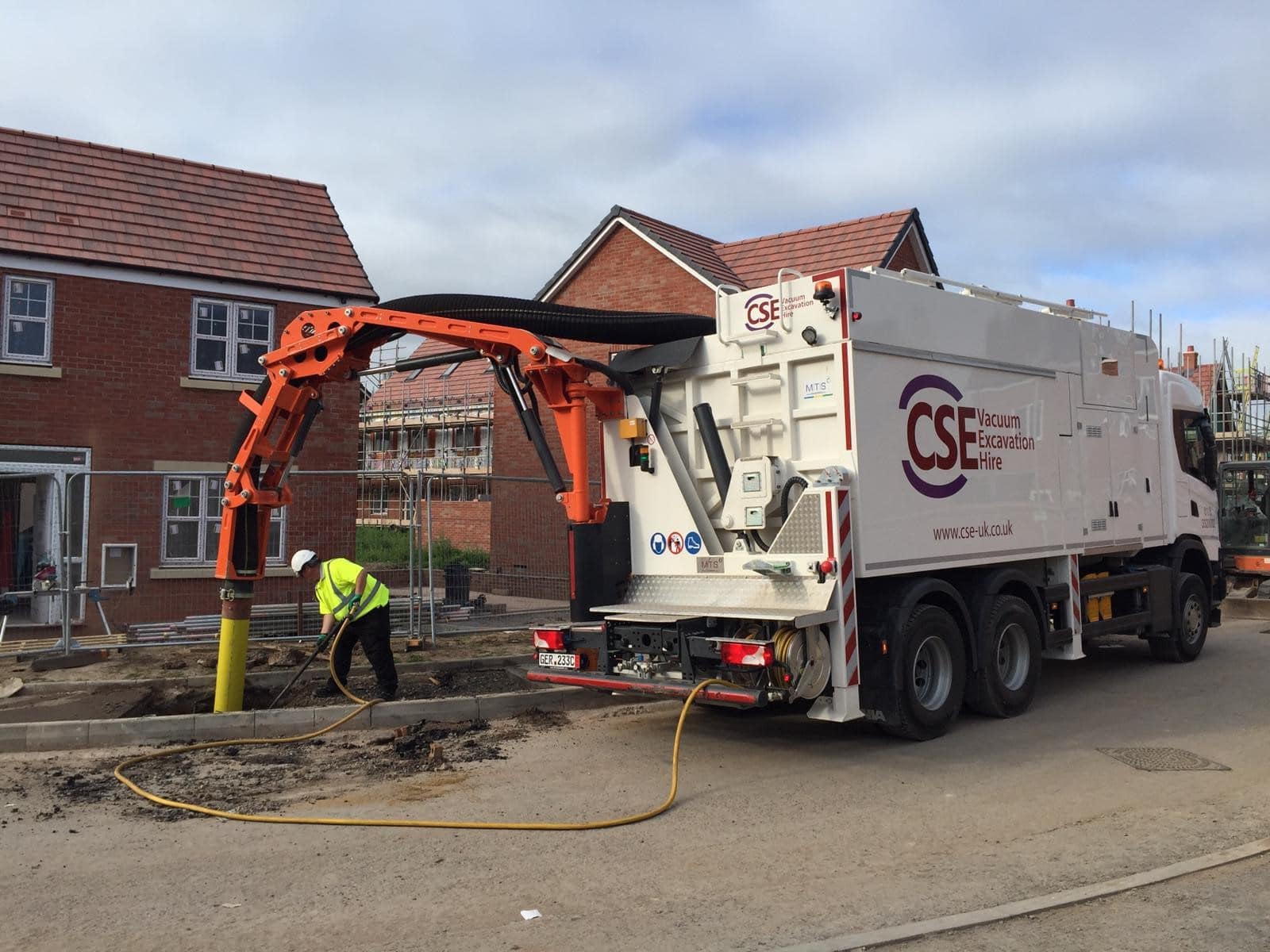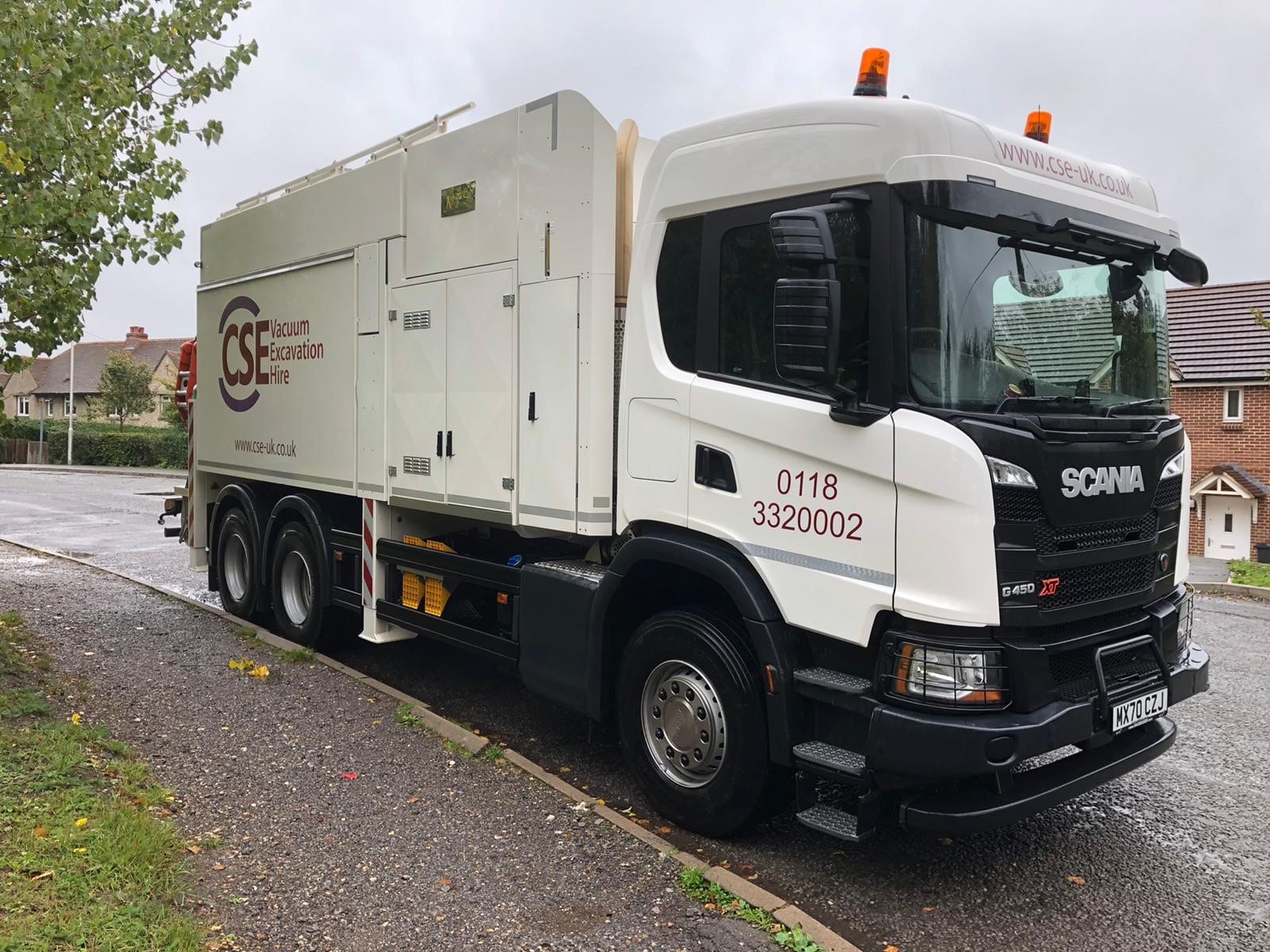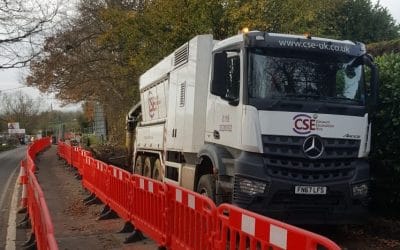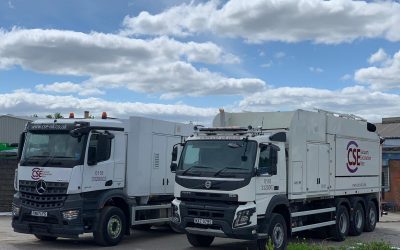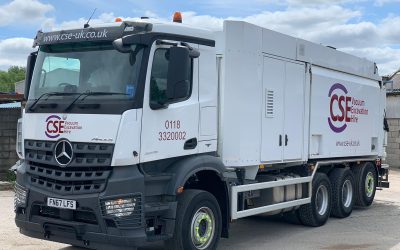About Us
Who are CSE?
“We are finding out that more and more companies throughout the UK are now introducing Vacuum Excavation as common practice for excavating around any live underground asset on their projects. All of our team are very passionate about delivering an extremely reliable and efficient service to all of our existing and future clients.”
Sean Jordan, Managing Director.
How does Vacuum Excavation work?
The Vacuum Excavator’s remote-control boom uses suction power and air to pull away ground material, lifting it up and pulling it into the machine. The excavated material is sucked through the machines 9″ hose and the material that is collected within the truck’s skip is tipped off on-site.
Air is “filtered” inside the machine by passing through 42 air filters, before it is released back out of the machine and into the air outside. The Vacuum Excavator can store up to 10m3 of excavated material, often meaning work can be completed without having to stop and offload at regular intervals.
Why choose Vacuum Excavation?
Vacuum Excavation provides a safe option when underground assets need to be exposed. Often hand digging carries a great deal of risk: personal injuries and in some cases, fatal injuries can occur if cables are struck. There are up to 60,000 service strikes every year with an average cost of £7,000 per strike. Mechanical equipment, whilst safer for the operator, can damage buried assets resulting in costly repairs not factored into the project budget or timescale. Increases in cost if other methods result in complications, means Vacuum Excavation is not only safe and smart, but also highly economical.
CSE operatives are competent and qualified workers who operate our equipment and machinery with great emphasis on both efficiency and safety. Excavated spoil is stored in the internal skips built into the Vacuum Excavator, leaving the site and surrounding areas free of any trip hazards for operatives and eliminates the use of excavator and dumper with two operatives in most cases.
Vacuum Excavation uses the vacuum power to gently pull away ground, carefully exposing the underground cables without causing damage with spot on precision. Supported by an air lance, the equipment can be used to excavate around all buried assets, safely exposing them for utilities contractors to access lines for repairs and maintenance.
Recent Projects
Vacuum Excavation Case Study: A Visit To Tamworth
CSE were recently hired to attend a job located in Tamworth for a well-known water institution, in which the customer in question was working on the installation of a Weir pipe in preparation to avoid any future flooding to the area. A Vacuum Excavation...
Vacuum Excavation Case Study: A Visit To Southampton
In recent years, Vacuum Excavation has gained popularity due to its ability to excavate quickly and efficiently around buried surfaces with a much lower risk of strikes or worker injury. Majority of workers don’t realise that Vacuum Excavators are well...
Vacuum Excavation Case Study: Beach Excavation
A trip to the beach sounds like a holiday, right? Not for our Tracked-Vac truck! During Summer 2020, our CSE team underwent a major operation in collaboration with the Environmental Agency and as an all-terrain system, our Tracked-Vac was perfect for...

